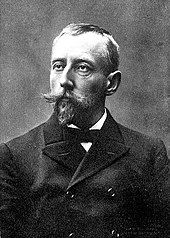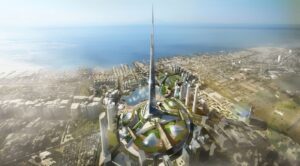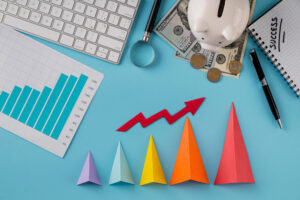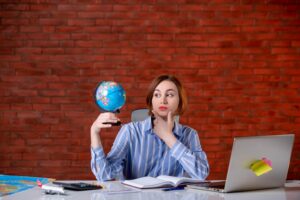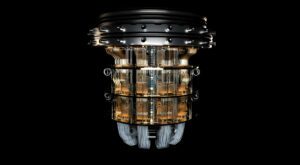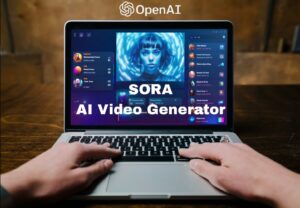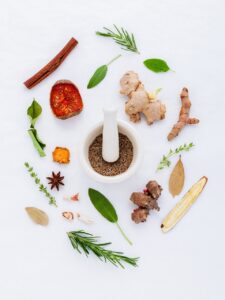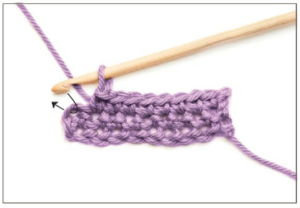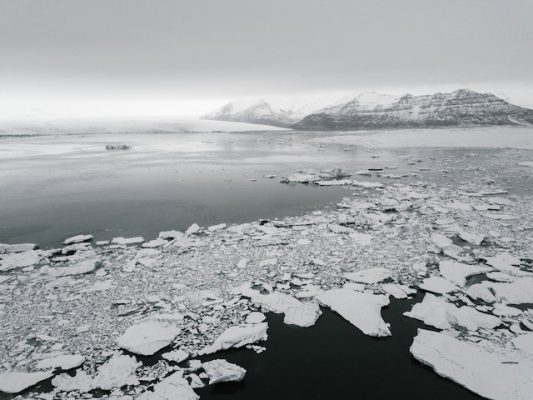
For over 2000 years men had dreamed of a vast southern continent, perhaps one as big as Europe and Asia combined. How else, asked some, could the land masses to the north be balanced?
Right down to the 18th century the idea of such a continent was firmly believed, and it was confidently supposed that the mighty land would be fertile and well worth possessing.
The truth is very different: a forbidding frozen desert where hills, mountains and valleys are hidden below snow and ice. Just a few rocks and hills can be seen; the rest is a vast ice plateau, the highest and biggest on Earth. And almost in the middle of it is the South Pole. The continent is bigger than the United States.
The ice cap slowly flows to the sea, producing icebergs. There are enormous glaciers and wide crevasses, which make the going hard and dangerous, and terrible winds make travel even more nightmarish. There is next to no life inland, but on the shores countless penguins abound. The seas contain seals and whales and the skies skua gulls and other birds that can endure the cold. The Antarctic winter is an endless night and in the summer the, sun rises only just above the bleak horizon. So much for earlier dreams of a near paradise.

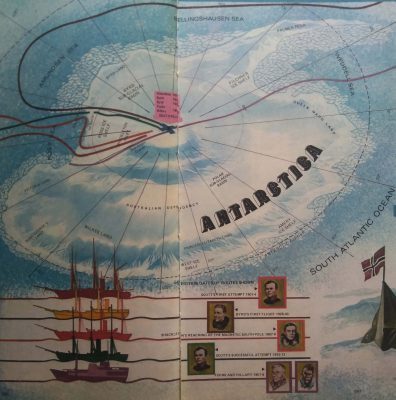
Beginning
The Antarctic Circle was first crossed in 1773 by that greatest of explorer-navigators, Captain James Cook, commander of the Resolution. He sailed past islands until coming up against the pack ice. His first sight of it proved once and for all that the longed for great continent of boundless possibilities was a myth.
Cook penetrated even further south the next year and sailing ships, mainly British and American, followed him early in the 19th century, slaughtering seals around the islands he had found. The first sighting of the Antarctic mainland came in 1820. A year earlier a merchant captain, William Smith, had thought he sighted land through the mist, and it was he who, with Lieutenant Edward Bransfield, Royal Navy, made the official sighting of what is Graham Land, the nearest part of the continent to South America. The small South Shetland Islands beside it became part of the British Empire.
The first major exploration of Antarctica took place between 1840-43. It was led by a remarkable navigator, Sir James Clark Ross who, back in 1831, had penetrated the Canadian Arctic and discovered the magnetic North Pole. Now he entered what became the Ross Sea in ships strong enough to push through pack ice. He discovered the great Ross Ice Barrier and named two volcanic peaks, Mount Terror and Mount Erebus after his two ships.
The coastline, white and magnificently mountainous, he named Victoria Land after his queen. Ross’s discovery of the area — a giant gash into Antarctica — was to prove invaluable to later explorers, for it was to become the quickest route to the South Pole. That was many years ahead, however, for public interest was mainly engaged in the search for the North-West Passage. The South Pole and Antarctica were virtually forgotten.
First Footprints!
In 1872, the steamship HMS Challenger made a four-year survey trip in the waters around Antarctica, but it was not until the 1890s that exploration began again in earnest. A Norwegian ship anchored off Victoria Land in 1894 and men first set foot on the mainland. Their names were Borchgrevink and Bull. Four years later, Borchgrevink went back and led a small party which spent the winter in Antarctica — 75 days of almost total darkness and constant cold. They later found that travel on the ice barrier was possible.
Next came the British. An expedition led by Captain Robert Falcon Scott set off in the Discovery in 1901 and was away until 1904. Scott penetrated to within 800 km of the Pole by sledge, and later, in 1908, one of Scott’s men, Ernest Shackleton, reached the Magnetic South Pole and got within 160 km of the Pole itself before being forced to turn back because supplies were running dangerously low.
The most famous of all Polar expeditions began in 1910. This was led by Captain Scott, who suddenly found himself engaged against his will in a race for the South Pole when the news broke that the great Norwegian explorer, Roald Amundsen, was eager to get there first.
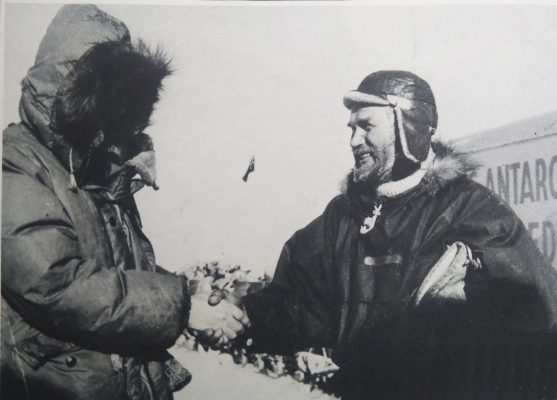
Great Disappointment!
With four companions, Lieutenant Bowers, Captain Oates, Petty Officer Evans and Dr. Wilson, Scott reached the South Pole on January 18, 1912, a day after they had seen to their intense disappointment a Norwegian flag and dog tracks. Amundsen had reached the longed-for spot five weeks earlier on December 14, 1911.
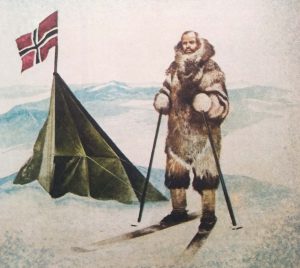
Heartbroken, the small party set off for their base. But the weather grew worse and worse and their supplies were running low. They became weaker and weaker and finally, within a few kilometres of their destination, they all perished. Evans had been the first to die as the result of a fall, then Oates, whose poor state of health was delaying the survivors, deliberately walked out into a blizzard to die. The bodies of the other three were found — on November 12, 1912.
From then onwards more and more expeditions set out, one led by Shackleton, others by Germans, Norwegians and Australians. The first flight over the South Pole was achieved by Admiral R. E. Byrd, US Navy, in 1929, who had earlier flown over the North Pole and who later explored on land.
Byrd, in fact, had a highly dramatic life. He flew the Atlantic in 1927 in 43 hours but was forced to make a landing in the sea near France. His flight over the South Pole was accomplished in the tri-motored monoplane, Floyd Bennett (named after his pilot on the North Pole flight), and with him were just a pilot, a map photographer and a radio operator. It was Byrd who gave the name Little America to a base he established on the Ross Ice Front at the edge of the Ross Sea. He also discovered Marie Byrd Land and named it after his wife.
In the years that followed Byrd’s pioneer flight, Antarctica, though still an awesome and challenging place, was mapped and photographed. Weather stations were set up and more and more men began to learn how to live on the icy continent.
In International Geophysical Year (1957-58) mass explorations of Antarctica took place, led by scientists of many nations. A famous feature of the year was the Commonwealth Trans-Atlantic Expedition, a double one which set out from either side of the continent and met at the Pole. The two leaders were Sir Vivian Fuchs and Sir Edmund Hillary, the co-conqueror of Mount Everest back in 1953.
The discovery and exploration of Antarctica
The discovery of Antarctica is a tale rife with adventure, hardship, and triumph. This inhospitable icy landmass was the last continent to be explored and settled by humans due to its remote location and treacherous conditions. The story begins in the 19th century when the fervor for exploration and scientific discovery gripped the western world.
The first recorded sighting of Antarctica can be traced back to 1820 when a Russian expedition led by Fabian Gottlieb von Bellingshausen and Mikhail Lazarev charted ice shelves in the Southern Ocean. However, it was not until the 1830s and 1840s that Antarctic exploration truly gained momentum.
One of the most famous expeditions to Antarctica was that of Sir James Clark Ross, a British naval officer and explorer. Ross set out on his mission in 1839 aboard two steam-powered ships, the Erebus and the Terror, equipped with cutting-edge technology for the time. Over the course of four years, Ross made significant discoveries, including the Ross Sea and the Ross Ice Shelf. His explorations helped establish the existence of a continent beyond the icy barrier.
Following in Ross’s footsteps, a number of other expeditions were launched to further explore Antarctica. Notable among them was Sir Ernest Shackleton’s ambitious Nimrod Expedition in 1907. Shackleton aimed to reach the South Pole but fell short, getting as close as 97 nautical miles. Despite this setback, Shackleton’s expedition achieved a number of notable feats, including the first ascent of Mount Erebus and the discovery of the Beardmore Glacier.
The most famous and celebrated journey to Antarctica, however, is undoubtedly that of Roald Amundsen. In 1911, Amundsen, a Norwegian explorer, successfully reached the South Pole, becoming the first person to do so. His expedition was marked by meticulous planning, careful navigation, and effective use of dogsleds. Amundsen’s triumph over Antarctica was not without its share of hardships, including extreme weather conditions, frostbite, and the ever-present threat of death. Nevertheless, his achievement forever etched his name in the annals of exploration.
Subsequent expeditions continued to push the boundaries of exploration in Antarctica. In 1956, an American scientist named Charles F. Passel drafted plans for the International Geophysical Year (IGY), which aimed to observe and study various scientific phenomena. The IGY gave rise to Operation Deep Freeze, led by Admiral Richard Byrd, which established research bases and stations across Antarctica.
Since then, Antarctica has remained an important destination for scientific research, with numerous nations establishing permanent research stations on the continent. The study of climate change, biodiversity, and geology is carried out year-round by dedicated scientists. Antarctica’s unique ecosystem, with its marine life and resilient native species such as penguins and seals, provides invaluable opportunities for researchers to gather essential data and study the effects of climate change.
The discovery and exploration of Antarctica are stories woven with bravery, scientific curiosity, and human resilience. These tales of adventure have not only expanded our understanding of the world but have also inspired subsequent generations to continue exploring and protecting this pristine and delicate continent. As we look to the future, it is crucial for us to preserve and conserve Antarctica’s unique environment, ensuring that future generations can witness the beauty and wonder of this icy wilderness.
Some major scientific discoveries made during early Antarctic expeditions include:
Discovery of the Earth’s magnetic field
During the British National Antarctic Expedition (1901-1904), the magnetic South Pole was discovered by the expedition leader Robert Falcon Scott. This helped scientists understand the Earth’s magnetic field and its behavior near the poles.
Identification of new species
Copied
Identification of new species
Several early expeditions, such as the British Antarctic Expedition (Discovery Expedition) led by Scott (1901-1904) and the Swedish Antarctic Expedition led by Otto Nordenskjold (1901-1904), discovered and identified numerous new species of plants, insects, birds, and marine life in Antarctica. These findings significantly contributed to the growing understanding of the unique biodiversity of the continent.
Several early expeditions, such as the British Antarctic Expedition (Discovery Expedition) led by Scott (1901-1904) and the Swedish Antarctic Expedition led by Otto Nordenskjold (1901-1904), discovered and identified numerous new species of plants, insects, birds, and marine life in Antarctica. These findings significantly contributed to the growing understanding of the unique biodiversity of the continent.
Several early expeditions, such as the British Antarctic Expedition (Discovery Expedition) led by Scott (1901-1904) and the Swedish Antarctic Expedition led by Otto Nordenskjold (1901-1904), discovered and identified numerous new species of plants, insects, birds, and marine life in Antarctica. These findings significantly contributed to the growing understanding of the unique biodiversity of the continent.
Exploration of inland regions
Copied
Exploration of inland regions
During the first successful expedition to reach the South Pole led by Roald Amundsen (1910-1912), significant geographical discoveries were made, including the mapping of previously unexplored coastal areas, mountain ranges (such as the Queen Maud Range), and the Polar Plateau. These findings helped establish a comprehensive understanding of Antarctica's geography and topography.
During the first successful expedition to reach the South Pole led by Roald Amundsen (1910-1912), significant geographical discoveries were made, including the mapping of previously unexplored coastal areas, mountain ranges (such as the Queen Maud Range), and the Polar Plateau. These findings helped establish a comprehensive understanding of Antarctica's geography and topography.
During the first successful expedition to reach the South Pole led by Roald Amundsen (1910-1912), significant geographical discoveries were made, including the mapping of previously unexplored coastal areas, mountain ranges (such as the Queen Maud Range), and the Polar Plateau. These findings helped establish a comprehensive understanding of Antarctica’s geography and topography.
Determination of Antarctica as a separate continent
Copied
Determination of Antarctica as a separate continent
Several expeditions, including those by James Cook (1772-1775) and Fabian Gottlieb von Bellingshausen (1819-1821), circumnavigated Antarctica and proved its existence as a separate continent rather than just a chain of islands. This key discovery changed the understanding of the continent and its unique environmental conditions.
Several expeditions, including those by James Cook (1772-1775) and Fabian Gottlieb von Bellingshausen (1819-1821), circumnavigated Antarctica and proved its existence as a separate continent rather than just a chain of islands. This key discovery changed the understanding of the continent and its unique environmental conditions.
Several expeditions, including those by James Cook (1772-1775) and Fabian Gottlieb von Bellingshausen (1819-1821), circumnavigated Antarctica and proved its existence as a separate continent rather than just a chain of islands. This key discovery changed the understanding of the continent and its unique environmental conditions.
Study of ice and icebergs
Copied
Study of ice and icebergs
The Shackleton Expedition (1907-1909) played a pivotal role in the study of ice and icebergs. The expedition's observations led to a greater understanding of iceberg formation, glaciology, and the behavior of ice in the Southern Ocean, contributing to knowledge about the continent's environment and climate.
The Shackleton Expedition (1907-1909) played a pivotal role in the study of ice and icebergs. The expedition's observations led to a greater understanding of iceberg formation, glaciology, and the behavior of ice in the Southern Ocean, contributing to knowledge about the continent's environment and climate.
The Shackleton Expedition (1907-1909) played a pivotal role in the study of ice and icebergs. The expedition’s observations led to a greater understanding of iceberg formation, glaciology, and the behavior of ice in the Southern Ocean, contributing to knowledge about the continent’s environment and climate.
Exploration of continental drift
Copied
Exploration of continental drift
The German Antarctic Expedition led by Erich von Drygalski (1901-1903) conducted geological surveys in Antarctica. These findings contributed to the understanding of continental drift and plate tectonics, helping scientists learn more about the geological history of the continent.
The German Antarctic Expedition led by Erich von Drygalski (1901-1903) conducted geological surveys in Antarctica. These findings contributed to the understanding of continental drift and plate tectonics, helping scientists learn more about the geological history of the continent.
The German Antarctic Expedition led by Erich von Drygalski (1901-1903) conducted geological surveys in Antarctica. These findings contributed to the understanding of continental drift and plate tectonics, helping scientists learn more about the geological history of the continent.
These early Antarctic expeditions and their discoveries greatly enhanced our understanding of Antarctica’s unique environment and wildlife. They helped establish Antarctica as a distinct continent, identified new species, contributed to knowledge about ice and glaciology, and explored the continent’s geography and geology. These findings continue to shape our understanding of Antarctica’s importance in climate research and conservation efforts.
The motivations and driving forces behind the early explorers who ventured to Antarctica were multi-faceted and varied among individuals and expeditions. However, there were several common themes that influenced their exploration:
- 1. Scientific Curiosity: Many early explorers were driven by a desire to understand the Earth’s geography, geology, and climate. Antarctica, being one of the last unexplored regions, presented opportunities to gather data and expand knowledge. These explorers wanted to uncover the mysteries of the continent and contribute to scientific fields such as meteorology, geology, and biology.
- 2. National and Imperialistic Competition: The late 19th and early 20th centuries saw intense competition among nations to claim territories and assert dominance. Antarctica became a battleground for this geopolitical rivalry, with explorers attempting to plant their nation’s flag and secure territorial rights. Expeditions led by Scott (British), Amundsen (Norwegian), and others were fueled by the nationalistic pride and ambition of these explorers.
- 3. Economic Incentives: There were hopes that Antarctica might contain valuable natural resources like minerals, coal, or even a landmass closely connected to the elusive Great Southern Continent. These possibilities encouraged exploration, as nations sought to discover and exploit potential economic opportunities.
- 4. Personal Prestige and Fame: For many explorers, Antarctica represented a chance to make their mark on history and gain personal recognition. The conquest and exploration of such an inhospitable and remote continent promised glory and prestige among their peers and society at large.
The discoveries made by these early explorers profoundly shaped our understanding of Antarctica. Here are a few ways:
-
Geographic Knowledge
Early explorers contributed significantly to the mapping and delineation of Antarctica, defining its coastline, islands, and mountain ranges. Their findings formed the foundation for subsequent cartographic depictions of the continent.
-
Climate and Weather Patterns
CopiedClimate and Weather PatternsExplorers collected meteorological data, such as temperature, wind speed, and precipitation, over long durations, providing insights into Antarctica's extreme and unique climate. These observations helped in understanding global weather patterns and modeling climate change scenarios.
Explorers collected meteorological data, such as temperature, wind speed, and precipitation, over long durations, providing insights into Antarctica’s extreme and unique climate. These observations helped in understanding global weather patterns and modeling climate change scenarios.
-
Exploration of Interior
CopiedExploration of InteriorExpeditions like Robert Falcon Scott's and Roald Amundsen's first reached the South Pole, mapping the interior and determining its position precisely. These feats expanded our knowledge of the continent's topography and led to a better understanding of its ice sheets, mountains, and interior conditions.
Expeditions like Robert Falcon Scott’s and Roald Amundsen’s first reached the South Pole, mapping the interior and determining its position precisely. These feats expanded our knowledge of the continent’s topography and led to a better understanding of its ice sheets, mountains, and interior conditions.
-
Antarctic Ecosystem
Early explorers made valuable contributions to the study of Antarctic flora and fauna, documenting species, collecting samples, and expanding knowledge about the continent’s unique and fragile ecosystems.
-
Infrastructure and Research Stations
CopiedInfrastructure and Research StationsThe early expeditions established infrastructure, such as research stations, which served as a foundation for subsequent scientific exploration and study. The discoveries made by these early explorers laid the groundwork for later scientific expeditions, enabling more detailed research across various disciplines.
The early expeditions established infrastructure, such as research stations, which served as a foundation for subsequent scientific exploration and study. The discoveries made by these early explorers laid the groundwork for later scientific expeditions, enabling more detailed research across various disciplines.
The motivations of early explorers stemmed from scientific curiosity, national competition, economic incentives, and personal ambition. Their discoveries significantly advanced our understanding of Antarctica’s geography, climate, ecosystems, and helped lay the groundwork for future scientific investigations and international cooperation in the region.
Understanding of Antarctica
Our understanding of Antarctica has evolved significantly over time, from its initial discovery to modern scientific research expeditions. Initially, Antarctica was considered a myth or a floating continent, until it was officially discovered in 1820 by a Russian expedition led by Faddey Bellingshausen and a British expedition led by Edward Bransfield.
Early expeditions to Antarctica were primarily focused on exploration and claims of territory. In the late 19th and early 20th centuries, several expeditions, including those of James Clark Ross, Carsten Borchgrevink, and Robert Falcon Scott, contributed to our initial understanding of the continent’s geography, climate, and wildlife. Scott’s exploration during the Terra Nova Expedition (1910-1913) significantly advanced scientific knowledge through geological, biological, and meteorological research.
However, it was not until the International Geophysical Year (IGY) in 1957-1958 that large-scale scientific research in Antarctica began. During this period, numerous countries established scientific stations and conducted extensive research in various fields. This transformative period allowed scientists to gather data on Antarctica’s geology, glaciology, meteorology, and biology, leading to a more comprehensive understanding of the continent.
Since the IGY, scientific research in Antarctica has continued to expand, with a focus on understanding its role in global climate systems and the potential impacts of climate change. Modern research expeditions utilize advanced technologies such as satellite imagery, remote sensing, and autonomous vehicles to study Antarctica’s ice shelves, glaciers, and ecosystems.
One significant breakthrough in our understanding of Antarctica occurred with the discovery of the ozone hole in the 1980s, attributed to human-produced chemicals. This discovery led to the signing of the Montreal Protocol, an international agreement aiming to protect the ozone layer, which has had positive impacts on Antarctic ozone levels.
Furthermore, drilling projects, such as the Antarctic Ice Sheet Project (1973-1978) and the ongoing International Thwaites Glacier Collaboration have provided valuable insights into Antarctica’s ancient climate history and its potential contributions to future sea-level rise.
Overall, our understanding of Antarctica has evolved from a mysterious and unexplored landmass to a continent with important scientific and environmental significance. The combination of historical expeditions, the International Geophysical Year, and ongoing modern research has provided a wealth of knowledge, helping us grasp the unique characteristics and crucial role Antarctica plays in the Earth’s systems.
Here are some legendary adventurers and explorers who braved the harsh conditions of Antarctica and their impact on modern-day adventurers:
-
01
Roald Amundsen
Norwegian explorer Roald Amundsen led the first successful expedition to reach the South Pole in 1911. Amundsen’s meticulous planning, relentless determination, and practical approach in using sled dogs for transportation marked a significant achievement in polar exploration. His ability to adapt to extreme conditions inspires modern-day adventurers to plan meticulously and utilize innovative techniques even in the most challenging environments.
CopiedRoald AmundsenNorwegian explorer Roald Amundsen led the first successful expedition to reach the South Pole in 1911. Amundsen's meticulous planning, relentless determination, and practical approach in using sled dogs for transportation marked a significant achievement in polar exploration. His ability to adapt to extreme conditions inspires modern-day adventurers to plan meticulously and utilize innovative techniques even in the most challenging environments.
-
02
Robert Falcon Scott
A British naval officer, Scott led the ill-fated Terra Nova Expedition in 1912, arriving at the South Pole only to find Amundsen had beaten him there. Tragically, Scott and his team perished on the return journey due to a combination of extreme weather and lack of supplies. Their courage in the face of adversity and unwavering determination continues to serve as a reminder of the risks associated with exploration in extreme environments.
CopiedRobert Falcon ScottA British naval officer, Scott led the ill-fated Terra Nova Expedition in 1912, arriving at the South Pole only to find Amundsen had beaten him there. Tragically, Scott and his team perished on the return journey due to a combination of extreme weather and lack of supplies. Their courage in the face of adversity and unwavering determination continues to serve as a reminder of the risks associated with exploration in extreme environments.
-
03
Ernest Shackleton
Another British explorer, Sir Ernest Shackleton, is renowned for his Antarctic expeditions, including the Imperial Trans-Antarctic Expedition (1914-1917). His ship, Endurance, was crushed by ice, leaving his crew stranded on the icy continent. Shackleton’s exceptional leadership skills and ability to keep his crew motivated and united during the ordeal are legendary. Despite the failure of his expedition, his leadership qualities and unwavering commitment to his team remain an inspiration for modern adventurers facing similar challenges.
CopiedErnest ShackletonAnother British explorer, Sir Ernest Shackleton, is renowned for his Antarctic expeditions, including the Imperial Trans-Antarctic Expedition (1914-1917). His ship, Endurance, was crushed by ice, leaving his crew stranded on the icy continent. Shackleton's exceptional leadership skills and ability to keep his crew motivated and united during the ordeal are legendary. Despite the failure of his expedition, his leadership qualities and unwavering commitment to his team remain an inspiration for modern adventurers facing similar challenges.
-
04
Richard E. Byrd
An American naval officer and aviator, Richard Byrd made several expeditions to Antarctica in the 1920s and 1930s. Byrd’s expeditions furthered scientific understanding of the region and contributed to the establishment of research stations. His pioneering use of aircraft for polar exploration paved the way for modern aerial exploration techniques. Byrd’s legacy inspires modern-day adventurers to explore technological advancements in their pursuit of discovery.
CopiedRichard E. ByrdAn American naval officer and aviator, Richard Byrd made several expeditions to Antarctica in the 1920s and 1930s. Byrd's expeditions furthered scientific understanding of the region and contributed to the establishment of research stations. His pioneering use of aircraft for polar exploration paved the way for modern aerial exploration techniques. Byrd's legacy inspires modern-day adventurers to explore technological advancements in their pursuit of discovery.
-
05
Liv Arnesen and Ann Bancroft
In 2001, Norwegian Liv Arnesen and American Ann Bancroft became the first women to ski across Antarctica. Their successful expedition shattered gender stereotypes in polar exploration and inspired numerous women to take up similar challenges. Their story continues to resonate with modern-day adventurers, reminding them of the importance of breaking boundaries and promoting inclusivity in exploration.
CopiedLiv Arnesen and Ann BancroftIn 2001, Norwegian Liv Arnesen and American Ann Bancroft became the first women to ski across Antarctica. Their successful expedition shattered gender stereotypes in polar exploration and inspired numerous women to take up similar challenges. Their story continues to resonate with modern-day adventurers, reminding them of the importance of breaking boundaries and promoting inclusivity in exploration.
The courage, resilience, and innovation displayed by these legendary adventurers have left an indelible mark on the minds of modern-day explorers. Their stories inspire today’s adventurers to push beyond their limits, overcome adversity, and discover new frontiers in their pursuit of knowledge and exploration.
Frequently Asked Questions for Antarctica Discovery
The existence of Antarctica was first hypothesized by the ancient Greeks and Romans. However, it was not until 1820 that the Russian expedition led by Fabian Gottlieb von Bellingshausen and the British expedition led by Edward Bransfield sighted the Antarctic Peninsula. This discovery is officially credited to both expeditions.
The discovery of Antarctica happened during the era of exploration in the early 19th century. As sailors searched for new trade routes and explored uncharted regions of the world, they gradually pushed further south. The expeditions led by Bellingshausen and Bransfield were a result of this ongoing exploration. They were the first to set their sights on the icy landmass and document their findings.
The main motivations behind the discovery of Antarctica were primarily scientific and exploration-based. Expeditions were driven by curiosity about the unknown, a desire to map the unexplored regions, and the pursuit of understanding the Earth’s geography and natural history. Additionally, countries were interested in asserting their territorial claims and advancements in technology and navigation techniques made reaching Antarctica more feasible.
The early explorers to Antarctica faced numerous challenges, including treacherous icy conditions, extreme cold temperatures, and severe sea storms. The lack of knowledge about the region meant that they had limited understanding of the environment, wildlife, and available resources, making it difficult to plan and prepare accordingly. The isolated and inhospitable nature of the continent also meant that obtaining supplies and communication with the outside world was extremely challenging.
Several notable explorers and adventurers played significant roles in the exploration of Antarctica. One of the most famous was Sir Ernest Shackleton, who led the Nimrod Expedition (1907-1909) and the ill-fated Endurance Expedition (1914-1917). Other notable figures include Roald Amundsen, who reached the South Pole in 1911, and Captain Robert Falcon Scott, who tragically died during the Terra Nova Expedition (1910-1913).
Antarctic expeditions have led to numerous significant discoveries. One of the most notable was the attainment of the South Pole by Roald Amundsen in 1911. The expeditions also made important scientific observations, uncovering new species of wildlife and marine life, studying the geology of the continent, and gathering valuable meteorological and oceanographic data. They also led to the mapping of vast regions of previously uncharted land.
Modern-day adventurers are drawn to Antarctica for its pristine and untouched natural beauty. The awe-inspiring landscapes, including towering icebergs, massive glaciers, and expansive ice shelves, offer breathtaking sights. Wildlife enthusiasts can witness colonies of penguins, seals, and various seabirds. Additionally, activities such as kayaking, camping, and even polar plunges into icy waters provide unique and unforgettable experiences.
Visiting Antarctica requires joining an expedition cruise or a guided tour. These trips usually depart from South American cities, such as Ushuaia in Argentina, with various duration options available. Travelers typically embark on specially equipped vessels that can navigate Antarctica’s icy waters. These expeditions offer a range of activities, including Zodiac boat trips to explore coastal areas, land excursions to observe wildlife, and opportunities for lectures and presentations about the region’s history and science.
When visiting Antarctica, it is important to respect and preserve the fragile ecosystem. Travelers must follow strict guidelines set by international agreements and experienced expedition leaders. It is essential to stay on designated paths, avoid disturbing wildlife, and never bring any non-native flora or fauna to the continent. Proper clothing and equipment, including warm layers, waterproof gear, and appropriate footwear, are necessary due to the extreme cold conditions. Safety briefings, provided by tour operators, are crucial to ensure a responsible and safe experience.






















